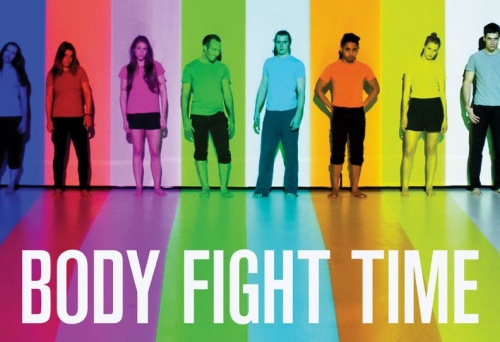Body Fight Time is an intriguing compilation of dance vignettes that collectively muse on how people inhabit their bodies, the vagaries of time, the effects of social interaction and the intrusive nature of conflict.
Malia Johnston and her co-director Emma Willis have constructed the scenarios for maximum visual impact, using designer John Verryt’s versatile set and projected imagery created by Rowan Pierce – together with the innovative lighting design of Brad Gledhill. The result is that many of the depictions become imprinted on the brain – serving as reference points for other sections of the work.
Johnston, who is also the choreographer, establishes a series of dance themes or signature movements that are revisited in different contexts throughout the work – lending unity to the whole. These include the vigorous shaking of various parts of the body and fast circular rotations of the head – that are unsettling and speak of bodies in disarray.
A community of nine performers which includes dance icon, Kilda Northcott, Christchurch dancer, Paul Young and the five dancers of Footnote Dance, inhabit the various imaginative landscapes- playing out the multiple scenes in quick succession.
The work opens with Paul Young performing a manic and contagious St Vitus dance that each of the dancers is infected with, in turn. This type of broad-based humour permeates much of the work – reaching a peak when all the dancers shake their naked butt-cheeks in unison.
The device of using words on flash cards held by the dancers, to make statements or pose rhetorical questions, is also used in a humorous manner. Eden Mulholland’s superb music score does much to contribute to the laughs – with the scratchy, country-sounds of “Over My Dead Body”, seeing various dead bodies lugged around screens, which depict the “final curtain”.
The title song of Body Fight Time is a thematic clincher and resonates long after the work is finished.
Kilda Northcott strongly inhabits her role as the appointed arbiter of life – serious in carrying out her task of the dispatch of souls. But equally, she frolics like some young and capricious goddess with the young men of the group, before finally choosing her mate.
Paul Young also plays a central role – with slight Machiavellian undertones – as the initiator of much of the action and as a provocateur. Both of these mature performers anchor the work giving it substance by virtue of their emotional investment in the characters.
At the other end of the age-scale young dance student, Carl Tolentino performs a beautiful sequence with film, examining his hands with wonder – as though seeing them for the first time.
However, all the dancers perform with utter conviction and throw themselves into Johnston’s highly energetic choreography with enthusiasm. Their unison work is exemplary – such as the restless tossing from side-to-side while lying on the floor, or the mass head-circling in blonde wigs, which are performed with excellent attention to timing.
The fight sequences are perhaps the least convincing of the various scenarios – with a lack of vicious aggression which inevitably transforms bodies into ugly instruments of destruction. However the effect is cleverly heightened by the use of filmed fighting shadows screened as a background to the conflict.
It is to be hoped that this work will receive more than one showing and will return to Auckland for its own season very soon. It is a work of substance, posing questions and engaging the mind while also providing highly-visual entertainment and some great dancing.
_______________________________
For more production details, click on the title above. Go to Home page to see other Reviews, recent Comments and Forum postings (under Chat Back), and News.
Copyright © in the review belongs to the reviewer





Comments